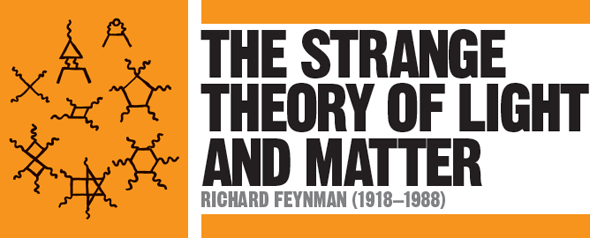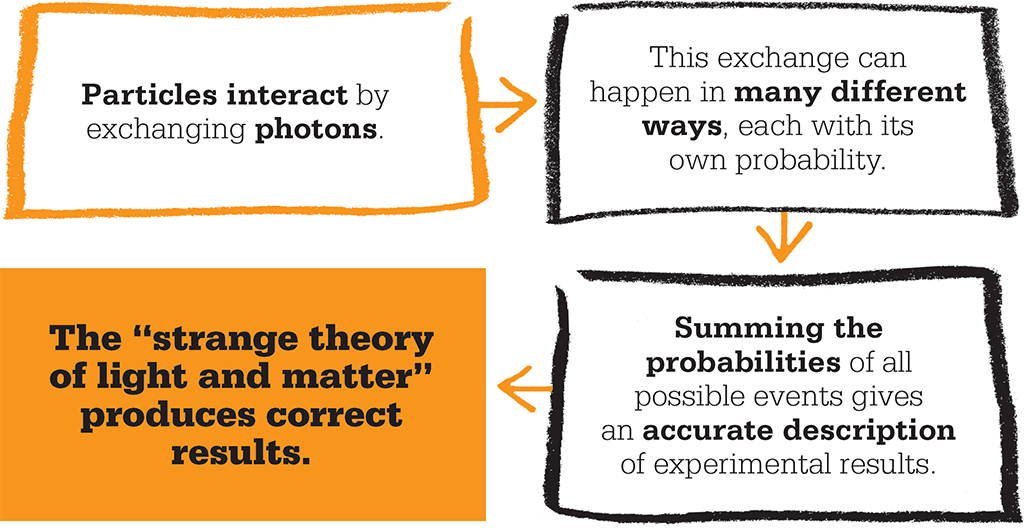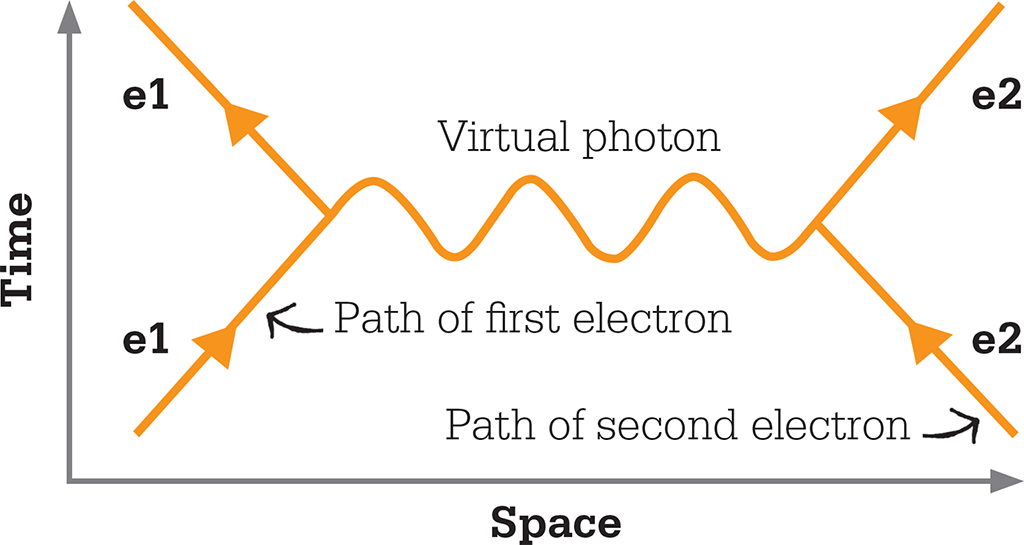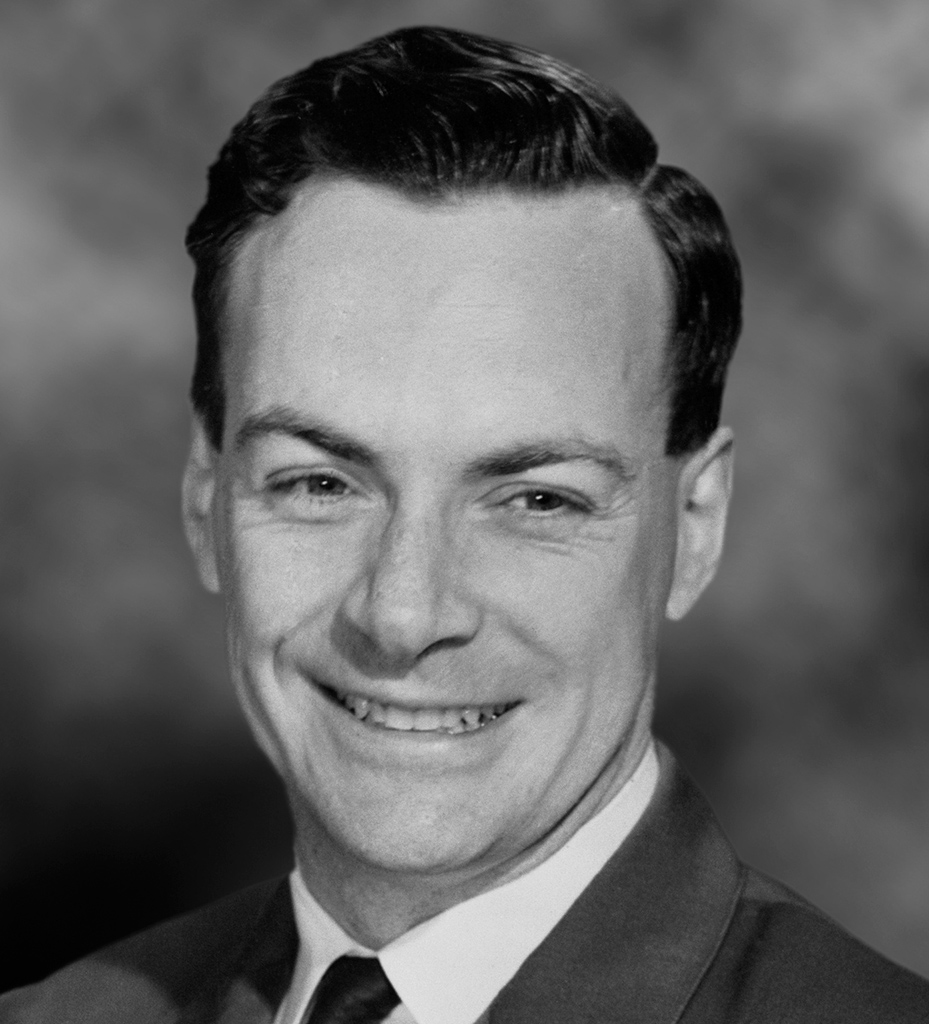
IN CONTEXT
Physics
1925 Louis de Broglie suggests that any particle with mass can behave like a wave.
1927 Werner Heisenberg shows there is an inherent uncertainty in certain pairs of values at the quantum level, such as the position and momentum of a particle.
1927 Paul Dirac applies quantum mechanics to fields rather than single particles.
Late 1950s Julian Schwinger and Sheldon Glashow develop the electroweak theory, which unites the weak nuclear force with electromagnetism.
1965 Moo-Young Han, Yoichiro Nambu, and Oscar Greenberg explain the interaction of particles under the strong force in terms of a property now known as “colour charge”.
One of the questions to arise from the quantum mechanics of the 1920s was how particles of matter interacted by means of forces. Electromagnetism also needed a theory that worked on the quantum scale. The theory that emerged, quantum electrodynamics (QED), explained the interaction of particles through the exchange of electromagnetism. It has proved very successful, although one of its pioneers, Richard Feynman, called it a “strange” theory because the picture of the Universe that it describes is hard to visualize.

Messenger particles
Paul Dirac made the first step towards a theory of QED based on the idea that electrically charged particles interacted through the exchange of quanta, or “photons”, of electromagnetic energy – the same electromagnetic quanta that comprise light. Photons can be created out of nothing for very brief periods of time in accordance with Heisenberg’s uncertainty principle, and this allows fluctuations in the amount of energy available in “empty” space. Such photons are sometimes called “virtual” particles, and physicists have subsequently confirmed their involvement in electromagnetism. More generally, the messenger particles in quantum field theories are known as “gauge bosons”.
However, there were problems with QED. Most significantly, its equations often generated nonsensical infinite values.

Feynman diagrams show the ways in which particles can interact. Here, two electrons repel each other by exchanging a virtual photon.
Summing probabilities
In 1947, German physicist Hans Bethe suggested a way of fixing the equations so that they mirrored real laboratory results. In the late 1940s, Japanese physicist Sin-Itiro Tomonaga, Americans Julian Schwinger and Richard Feynman, and others took Bethe’s ideas and developed them to produce a mathematically sound version of QED. It produced meaningful results by considering all the possible ways that interactions could take place according to quantum mechanics.
Feynman made this complex subject approachable through his invention of “Feynman diagrams” – simple pictorial representations of possible electromagnetic interactions between particles, which provide an intuitive description of the processes at work. The key breakthrough was to find a mathematical way of modelling an interaction as a sum of the probabilities of each individual pathway, which include pathways in which particles move backwards in time. When summed, many of the probabilities cancel each other out: for instance, the probability of a particle travelling in a particular direction may be the same as the probability of it travelling in the opposite direction, so adding these probabilities gives a sum of zero. Summing every possibility, including the “strange” ones involving backwards time travel, produces familiar results such as light appearing to travel in straight lines. However, under certain conditions, the summed probabilities do produce strange results, and experiments have shown that light does not always necessarily travel in straight lines. As such, QED provides an accurate description of reality even if it feels alien to the world we perceive.
QED proved so successful that it has become a model for similar theories of other fundamental forces – the strong nuclear force has been successfully described by quantum chromodynamics (QCD), while the electromagnetic and weak nuclear forces have been unified in a combined electroweak gauge theory. Only gravitation so far refuses to conform to this kind of model.
RICHARD FEYNMAN

Born in New York in 1918, Richard Feynman showed a talent for mathematics at an early age, and took a first degree at Massachusetts Institute of Technology (MIT) before attaining a perfect score in mathematics and physics for his graduate entrance exam to Princeton. After receiving his PhD in 1942, Feynman worked under Hans Bethe in the Manhattan Project to develop the atomic bomb. Following the end of World War II, he continued his work with Bethe at Cornell University, where he carried out his most important work on QED.
Feynman showed a flair for communicating his ideas. He promoted the potential of nanotechnology, and late in his life wrote bestselling accounts of QED and other aspects of modern physics.
Key works
1950 Mathematical Formulation of the Quantum Theory of Electromagnetic Interaction
1985 QED: The Strange Theory of Light and Matter
1985 Surely You’re Joking, Mr Feynman?
See also: Erwin Schrödinger • Werner Heisenberg • Paul Dirac • Sheldon Glashow